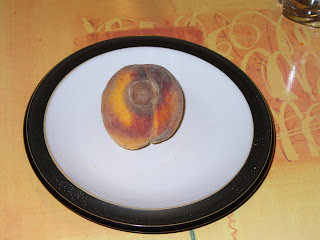I've recently finished reading
Green Chic: Saving the Earth in Style written by Christie Matheson. So, what's the book about?
The book is broken down into eight basic sections, each dealing with going green in a particular area of your life. As you might guess from the title, the author is mostly focused on living a stylish life, and how it really is stylish to be green, and how being green can make you more stylish.
The first section focuses on Little Green Things, and I have to say I almost put the book down after reading this area. If you've never had a green thought in your life, the suggestions might be valuable for you. Personally, 'turn off the lights when you're not using them' didn't add to my repertoire of green tricks.
The next section is Home, Green Home which definitely got a bit better. Along with the standard advice of using green cleaning products (she suggests Method, Mrs. Meyer's and Planet as the manufacturers), the author really gets into what the ingredients in standard cleaners do to both us and our environment. She goes through a few different areas in the home, and I may try out using handkerchiefs instead of tissues (organic cotton or hemp). I've thought about handkerchiefs before, and this book reminded me that I was interested in them as an alternative to Kleenex! The most informative part of this chapter is where the author details the different types of plastic, what they are, and why we should (or shouldn't) use them. The little number inside the recycling symbol tells you a lot about the plastic, and doesn't necessarily mean you can actually recycle the item. Basically, stay far away from anything that has a 3, 6 or 7 in that little symbol. Definitely avoid anything with the number 3 which is polyvinyl chloride, it's very resource intensive, lots of toxic chemicals, and most recycling facilities won't accept it. There's a few more sections on decorating which would be a great read before starting any small renovations.
Next section is dining and drinking, and the author weighs in heavily on the side of buy local, buy organic. If you have a choice, start with local then try organic. According to her, "the average food item travels about 1,500 miles before it arrives on your plate". The numbers may be a little different for Canada vs the States, but that's a lot of miles, and the food loses nutrition as it travels. She also mentions that meatless meals are far less resource intensive, and to stick with as much unprocessed food as possible. It seems that 17 000 new food products are on the market every year....I doubt there are 17 000 more vegetables or animals discovered every year, so I bet that's a lot of processing!
The next two sections are focused on looking good. Hello, Gorgeous and Green is the New Black deal with makeup, skincare and clothing. I was interested in the list of makeup and hair care ingredients, but I'm not sure yet if I'll be making the effort to switch to green shampoo...in this case the cost differential may be too high, I'll have to look into it more. The clothing section was interesting to me since it is one of the only places in the book that actually suggests getting rid of what you have. The author figures you should "edit your closet" so that you only have items that you love to wear. This lets you get dressed in awesome clothes in the morning, avoids you buying duplicates since you already know exactly what you have and gives you pretty stringent requirements for new clothes - they have to look and feel great, and be green. She gives a list of designers that use eco-friendly fabrics, suggests where to get great vintage clothing and goes over some of the worst fabrics to buy (cotton is bad, wool is better but still heavily treated). This gives me the excuse I wanted to go check out an alpaca sweater...I love the soft feel of the alpaca wool! Jewelery is extremely resource intensive (mining) which I'd never really thought of before. There are jewelers out there who specialize in using recovered metals that are reshaped into modern jewelery...something I'll definitely check out if I need any new items.
Getting Around deals primarily with everyday transportation (try to avoid cars) and travel. She suggests trying to avoid destinations that are anti-green like Las Vegas, and to travel light whenever possible - just a carry on would be ideal. Also try to avoid souvenirs you don't really need/want in favour of truly thoughtful items, or just take a picture. If you don't drive a lot, but don't want to be entirely without a car, a car sharing program such as
zipcar could be for you. It's similar to renting, but only available for members and you can get hourly rates in addition to daily. Currently the only Canadian cities participating in
zipcar are Toronto and Vancouver, but there may be other car-sharing programs. For that matter if you truly don't drive much, a car rental might be cheaper than buying the car and paying insurance for all those days it's sitting in your driveway! If you do have a car, make sure you keep it maintained so that you get the best mileage possible.
The final two sections, On Occasions and Big Green Things mostly recap suggestions from elsewhere in the book. Basically, use less stuff, don't waste, buy local, avoid synthetics, etc..
Is the book worth reading? It's not bad, though the tone sometimes seems very superficial. Avoid the first section and you should be able to get enough good information to justify borrowing it from the library. I don't think I'd buy this book, or keep it on my bookshelf permanently, but reading it is a great reminder of where I should be looking to green my life.




















